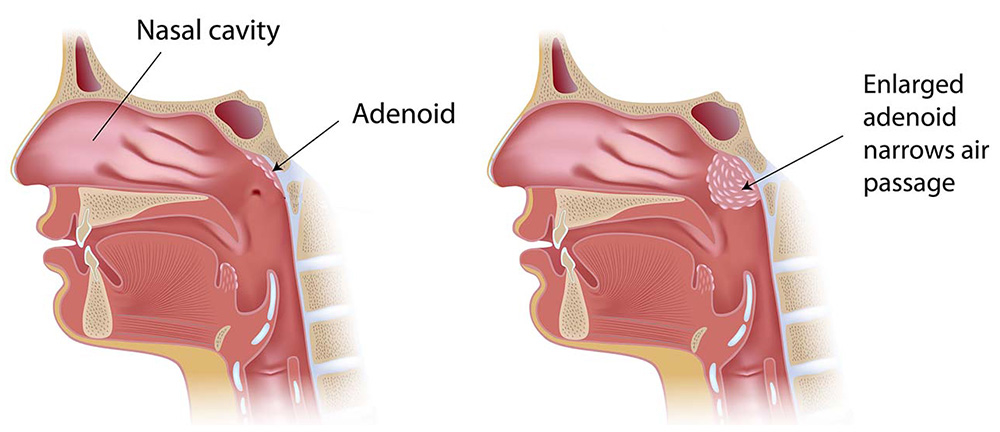Adenoidectomy
Key facts
- Adenoidectomy is surgery to remove the adenoids.
- It may be recommended for children with enlarged adenoids that are causing problems.
- Tonsillectomy (removal of the tonsils) can be done at the same time as an adenoidectomy.
What is an adenoidectomy?
Adenoidectomy is surgery to remove the adenoids — small lumps of soft tissue found at the back of the nose. Your adenoids are part of your immune system. They help protect your nose and throat from infection.
Adenoidectomy is usually a short and safe procedure. Your child will have a sore throat for a couple of days.

When may an adenoidectomy be done?
Adenoidectomy is usually recommended for children with enlarged adenoids that are causing problems.
Adenoids can be quite large in young children. Problems linked with large adenoids can include:
- breathing and sleep problems, which can cause daytime tiredness and behavioural problems
- mouth breathing
- frequent ear infections and ‘glue ear’
If large adenoids are causing ongoing problems, your doctor may recommend an adenoidectomy.
Sometimes, an adenoidectomy is done at the same time as a tonsillectomy (having your tonsils removed). An adenoidectomy may also be done at the same time as having grommets put in for a glue ear.
How to prepare for an adenoidectomy
You should follow any guidelines your hospital or clinic provides on how to prepare for an adenoidectomy.
For example, your child will be asked not to eat or drink for some hours before the operation.
What happens during an adenoidectomy?
An adenoidectomy is performed under a general anaesthetic.
The surgeon removes the adenoid tissue through your open mouth. This usually takes about 30 minutes.
Recovering from an adenoidectomy
After an adenoidectomy, it takes about an hour to recover from the general anaesthetic. The anaesthetic might cause nausea (feeling sick) or vomiting (being sick) and a sore throat.
Your child will be encouraged to drink and eat light foods. Your child will need to drink before you go home. Some children may go home on the day of the surgery, others will be asked to stay overnight.
Their throat will probably be sore for several days. Suitable pain-relief medicines will be recommended by your doctor.
If their tonsils are also removed, they will have more pain and it will last longer.
Your child should rest for a day or 2 after the procedure. After that they can go back to their normal activities.
For a few days — or maybe even weeks — after the procedure, your child might have:
- a blocked nose
- a smelly nose
- a light, blood-stained discharge
Possible risks or complications
Adenoidectomy is generally a safe procedure, but all surgery has some risks. Your doctor will talk with you about the possible complications of this surgery.
Contact your doctor if your child has:
- a fever
- bright red bleeding from their nose or mouth
- vomiting and has more than a teaspoon of blood in their vomit or vomits more than 3 or 4 times
- trouble eating or drinking
- pain that isn’t helped by pain-relief medicines
Resources and support
You can read more on preparing for surgery here.
If you want to know more about adenoidectomy, you can call the healthdirect helpline on 1800 022 222 (known as NURSE-ON-CALL in Victoria). A registered nurse is available to speak with 24 hours a day, 7 days a week.
Learn more here about the development and quality assurance of healthdirect content.
Last reviewed: August 2023










